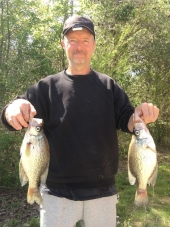posted 12 years ago
Brassica do well in your situation: I find kale and red cabbage to be especially tough.
Silverbeet, aka Swiss chard.
I've got some kind of chicory, which is great for leaves, as well as bee food.
Any umbelliferae. Not so much for human food, but it's many insect's favourite family. Coriander, parsnip and fennel especially.
All those edible weeds: dandelion, purslane, chickweed, pigweed...
Sounds like a good opportunity for rhubarb.









